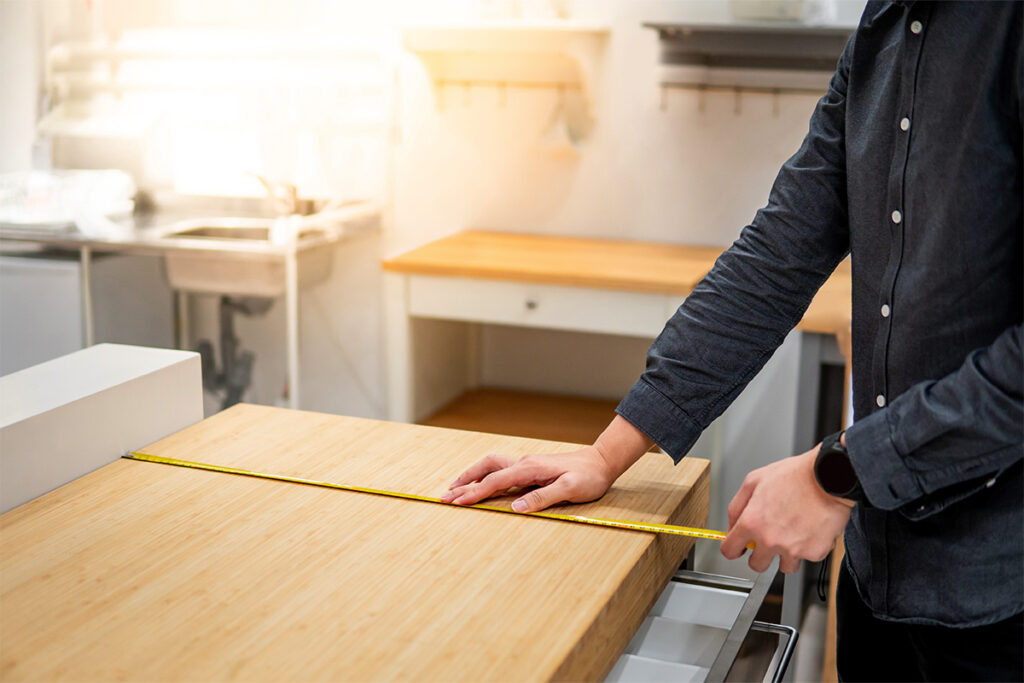Getting the right dresser measurements is important to make sure the furniture fits into the space, but also to make sure you can move around the room comfortably. If your dresser is too large, the room may feel cramped. Learning how to measure a dresser will make sure the room doesn’t feel cramped or offset the vibe in a spacious area.
Taking dresser measurements may not be considered a complex task by many, but it is understood to be an essential part of any furniture buying or rearranging process. When you have the accurate dresser width and dresser height, you’ll make sure you have enough drawers, surface space, tiny cubbies, and additional features that help you stay organized, and keep the vibe.
Dresser Dimensions

Standard Dresser
About 30 to 50 inches in height, 30 to 70 inches across, and 18 to 24 inches deep.
Double Dresser
Around 30 inches in height, while the width can range from 60 to 70 inches and depth is somewhere between 18 to 24 inches.
Small Dresser
Dimensions vary, but most small are about 12 inches wide, 14 inches deep, and 4 inches high.
Vertical Dresser
Approximately 36 to 60 inches wide, 26 to 44 inches tall, and 16 to 20 inches deep.
Bureau Dresser
Around 30 to 40 inches in height, while the width can range from 30 to 60 inches. The depth of a bureau is typically between 18 to 24 inches.
How to Measure a Dresser?

Dresser Depth
To get the dresser depth, measure the distance between the wall and the closest furniture the dresser would be facing (usually a bed) and subtract 36″.
Dresser Width
For the dresser width, measure the area of the wall you plan to put it on horizontally, taking into consideration any closet or bedroom doors that may swing open nearby.
Dresser Height
To find the dresser’s height, measure from the floor to the window sill or floor to the ceiling vertically.
Choose The Right Dresser For Your Room
Choosing the right dresser for your room should be a good time. Once you get a sense of the style and features you want, you’ll want to know things like the standard dresser width you’re working with to get a sense of the amount of drawers and surface space you can obtain with the perfect dresser.
Keep in mind there’s different styles available for vintage, modern, or more rustic looks and cost will depend on the size, material, and your region. You can even refurbish old furnishings into dressers with the right amount of tools. Make sure you understand the cost of shipping and assembly before you fall in love with any online dressers. And if you’ll be sharing this dresser, it’s important to note that other people may buy more clothes too and may not want to bring in a more zebra aesthetic.
If you need help with furniture assembly, don’t forget that Taskers are here for you and armed with all the important furniture assembly fundamentals.
Where to Place a Dresser?
Before you buy a dresser, it’s important to figure out the dresser dimensions so you can plan where it will fit into your home’s layout. You should always measure a dresser before buying to make sure it will fit in your place. This also means you need to know the size of the spot where you’ll want to place your dresser. Width and depth are the most important measurements because they’ll let you know how much floor space the dresser will take up.
Dressers are most commonly used as bedroom furniture, but can also be used as storage and surface space in a large bathroom or in a dressing room.
If you opt to move the dresser into your bedroom, there are several areas where it can be used. You can place it opposite your bed where it can also be used as a TV stand. You can also place it underneath a bedroom window. You could also buy two and use them as oversized nightstands placed on either side of the bed.
Dressers are a good investment that will never go out of style. Keep these measurements in mind as you shop for the dresser that’s perfect for you. And if you need help assembling one, just book a Furniture Assembly Tasker!














